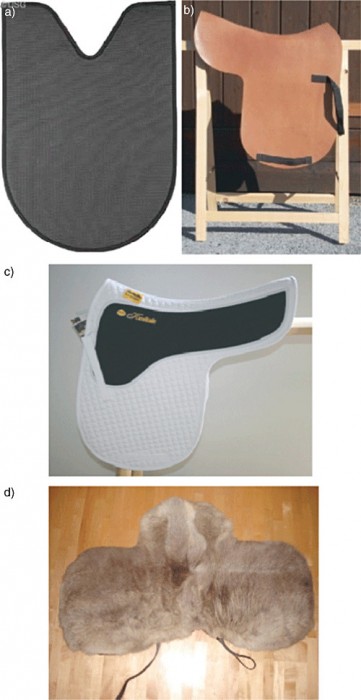
Effects of saddle pads on pressure beneath a fitting saddle
Saddle pads are very popular in all riding disciplines and come in a great variety of shapes, materials and colours. Although they were designed to protect the saddle and back of the horse, nowadays it is also an important fashion item to many riders.
The aim of this study is to investigate the influence of different saddle pads on forces and pressure distribution beneath a fitting saddle. Can saddle pads cause or prevent areas of high pressures under the saddle?
Sixteen horses of different breeds and ages were ridden by one experienced rider (male, 80 kg) on four new dressage saddles (fitted by 2 experienced saddlers following a standardised protocol). To ensure the same conditions the horses were ridden on a treadmill and filmed with a high-speed video system. The pressure measuring pads were placed under the saddle and saddle pad.
Four saddle pads were tested:
- Gel pad: synthetic gel material with PVC cover
- Leather pad: complete cow-hide leather pad
- Foam pad: cotton pad with attached foam pad on the upper surface
- Reindeer fur pad: lower surface reindeerfur, upper surface reindeer leather
The results showed that the reindeer fur pad was the only pad that decreased the maximum overall force at both walk and trot and made a significant difference compared to no pad. This may be the same for other wool pads, such as lamb wool pads. However, no single pad increased the maximum overall force and they also did not increase the pressure distribution. Therefor the authors conclude that these saddle pads can’t worsen the fit of a well-fitting saddle.
> From: Kotschwar et al., Equine Vet J 42 (2010) 114-118. All rights reserved to EVJ Ltd. Click here for the online summary.


